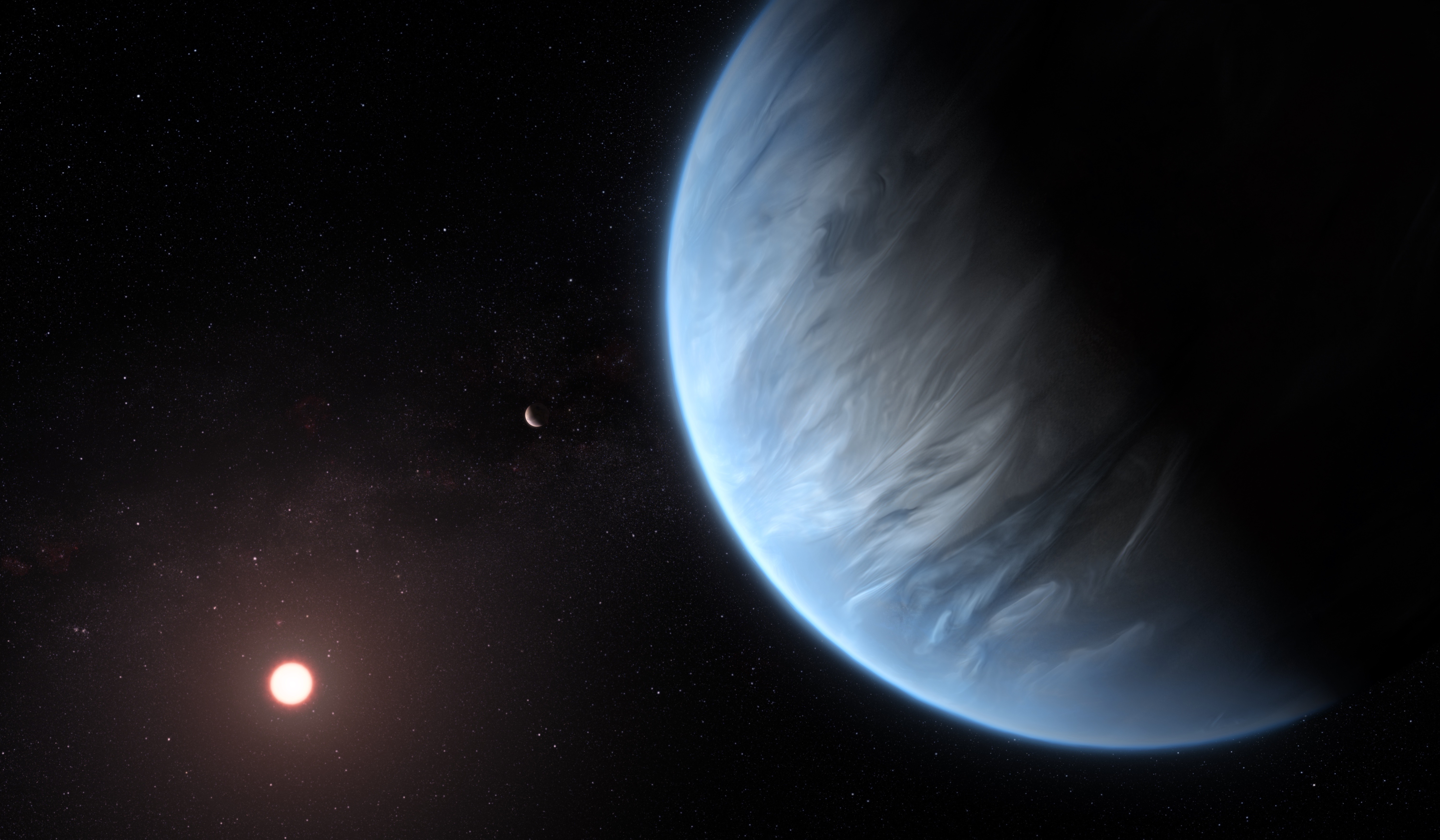'Planet factories' may explain mysterious diversity of super-Earth alien worlds
The proposed formation process may be broadly applicable across solar systems.

Super-Earths are the most common type of planet in the galaxy, but much remains unknown about how these mysterious worlds form.
Now, in a new study, researchers suggest they may be able to explain the origin of these enigmatic worlds and also that of other rocky planets and moons, including Earth and its siblings.
In the 30 or so years since astronomers first began detecting exoplanets orbiting distant stars, researchers have detected many strange new kinds of worlds unlike any known in our solar system. These include super-Earths, rocky worlds larger than our own at up to about 10 times Earth's mass. Some super-Earths possess atmospheres of hydrogen and helium, making them appear almost like gas giants.
Related: These 10 super extreme exoplanets are out of this world
Much remains uncertain about the underlying reasons for the differences between super-Earths and the solar system's terrestrial planets — Earth, Mercury, Venus and Mars. For example, super-Earths are typically much bigger than the solar system's terrestrial planets, with diameters approaching those of ice giants such as Uranus and Neptune. However, "recent data has revealed that extrasolar super-Earths are typically silicate-rich, much like the Earth itself," study lead author Konstantin Batygin, a planetary astrophysicist at the California Institute of Technology (Caltech) in Pasadena, told Space.com.
In addition, stars often host multiple super-Earths, and those revolving around a star together are often similar to each other in terms of size, mass, the spacing between their orbits and other key features. "Within a single planetary system, super-Earths are like 'peas in a pod,'" Andrew Howard, a professor of astronomy at Caltech who was not involved in the new study, said in a statement. "You basically have a planet factory that only knows how to make planets of one mass, and it just squirts them out one after the other."
However, although super-Earths usually prove similar to each other when they orbit the same star, there is a remarkable diversity of super-Earth types when many different stars are compared.
Breaking space news, the latest updates on rocket launches, skywatching events and more!
"Adding to the difficulty of modeling super-Earth formation is the fact that our own solar system does not contain any super-Earths, except perhaps a very distant one," Batygin said.
Now researchers may have come up with a scenario that could explain not only the origin of super-Earths, but also that of the kind of rocky planets and moons that populate our own solar system. Batygin and his colleague Alessandro Morbidelli, a planetary scientist at the Côte d'Azur Observatory in Nice, France, detailed their findings online Thursday (Jan. 12) in the journal Nature Astronomy.
Previous research suggested planetary systems begin as large spinning disks of gas and dust. These "protoplanetary disks" consolidate over the course of a few million years or so, with most of the gas concentrating on the star at the center of the system, while solid material slowly coalesces into asteroids, comets, planets and moons.
To help explain how own solar system came to possess smaller rocky planets near the sun and larger gas giants farther away, in a 2021 study, Batygin and his colleagues suggested that planet formation in the solar protoplanetary disk involved two distinct rings — an inner one for the rocky planets and an outer one for more massive planets.
Now, in the new study, the scientists investigated whether this concept of multiple distinct rings in protoplanetary disks might help explain super-Earths as well.
"We looked at the existing model of planet formation, knowing that it does not reproduce what we see, and asked, 'What assertion are we taking for granted?'" Batygin said. "In this case, it turned out to be the commonly made assumption was that solid material within protoplanetary disks is uniformly dispersed. By jettisoning this assumption and instead supposing that the first solid bodies form in discrete rings, the new model can explain different types of planetary systems with a unified framework."
The researchers suggest that, during planetary formation, solid material concentrates in a narrow band in the protoplanetary disk where silicate vapors condense to form rocky pebbles.
"If you're a dust grain, you feel considerable headwind in the disk because the gas is orbiting a bit more slowly, and you spiral toward the star, but if you're in vapor form, you simply spiral outward, together with the gas in the expanding disk," Batygin said in a statement. "So that place where you turn from vapor into solids is where material accumulates."
Related: Solar system planets, order and formation: A guide
The scientists propose that this narrow band can act as a planet factory, with rocky worlds forming within it until they become large enough to exit the ring due to forces exerted by the gas. Over time, this process can produce several similarly sized rocky planets. This might help explain why all the super-Earths around one star might closely resemble each other but look quite different from the super-Earths around another star, which might have a significantly different planet factory.
If this ring contained a lot of mass, planets would grow until they migrate away, resulting in a planetary system containing similar super-Earths. If the ring contained less mass, it would produce worlds that look more like our solar system's terrestrial planets.
The researchers first came up with this idea of a narrow band giving rise to rocky bodies when they were exploring how to explain the formation of Jupiter's four largest moons — Io, Europa, Ganymede and Callisto. Galileo first spotted these satellites around the gas giant in the early 1600s.
"Over the years, it has been pointed out multiple times that extrasolar super-Earths look a lot like scaled-up variants of the Galilean moons," Batygin said. "But the physical nature of this connection had remained elusive. Among the most exciting aspects of our model is that it provides a theoretical framework that can explain the formation of the terrestrial planets of the solar system, extrasolar super-Earths, as well as the origins of the moons of Jupiter and Saturn, in a unified manner."
Follow us on Twitter @Spacedotcom or on Facebook.

Charles Q. Choi is a contributing writer for Space.com and Live Science. He covers all things human origins and astronomy as well as physics, animals and general science topics. Charles has a Master of Arts degree from the University of Missouri-Columbia, School of Journalism and a Bachelor of Arts degree from the University of South Florida. Charles has visited every continent on Earth, drinking rancid yak butter tea in Lhasa, snorkeling with sea lions in the Galapagos and even climbing an iceberg in Antarctica. Visit him at http://www.sciwriter.us
